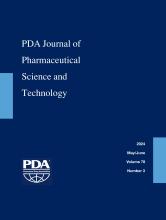Abstract
This article describes the development of a representative dataset of extractables and leachables (E&L) from the combined Extractables and Leachables Safety Information Exchange (ELSIE) Consortium and the Product Quality Research Institute (PQRI) published datasets, representing a total of 783 chemicals. A chemical structure-based clustering of the combined dataset identified 142 distinct chemical classes with two or more chemicals across the combined dataset. The majority of these classes (105 chemical classes out of 142) contained chemicals from both datasets, whereas 8 classes contained only chemicals from the ELSIE dataset and 29 classes contain only chemicals from the PQRI dataset. This evaluation also identified classes containing chemicals that were flagged as potentially mutagenic as well as potent (strong or extreme) dermal sensitizers by in silico tools. The prevalence of alerting structures in the E&L datasets was approximately 9% (69 examples) for mutagens and 3% (25 examples) for potent sensitizers. This analysis showed that most (80%; 20 of 25) E&L predicted to be strong or extreme dermal sensitizers were also flagged as potential mutagens. Only two chemical classes, each containing three chemicals (alkyl bromides and isothiocyanates), were uniquely identified in the PQRI dataset and contained chemicals predicted to be potential mutagens and/or potent dermal sensitizers.
- Dermal sensitization
- Mutagenicity
- Extractables and leachables
- Computational assessments
- Chemical class analysis
- © PDA, Inc. 2024
PDA members receive access to all articles published in the current year and previous volume year. Institutional subscribers received access to all content. Log in below to receive access to this article if you are either of these.
If you are neither or you are a PDA member trying to access an article outside of your membership license, then you must purchase access to this article (below). If you do not have a username or password for JPST, you will be required to create an account prior to purchasing.
Full issue PDFs are for PDA members only.
Note to pda.org users
The PDA and PDA bookstore websites (www.pda.org and www.pda.org/bookstore) are separate websites from the PDA JPST website. When you first join PDA, your initial UserID and Password are sent to HighWirePress to create your PDA JPST account. Subsequent UserrID and Password changes required at the PDA websites will not pass on to PDA JPST and vice versa. If you forget your PDA JPST UserID and/or Password, you can request help to retrieve UserID and reset Password below.






